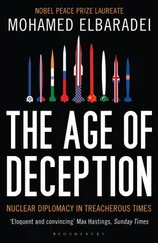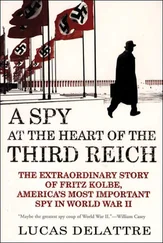But from an operational point of view, the disintegration of central power was an enormous bonus. The Baltics in particular were a spies’ sweetshop: accessible, target-rich and friendly. After decades when every trip across the Soviet frontier involved elaborate preparation, now all one needed to do was to hop onto a ferry from Helsinki or Stockholm. Within a few hours the foreign visitor could be in a bar near a military base, buying drinks for disgruntled officers and sounding out their availability for some lucrative ‘freelance research work’ for a ‘consultancy’. The spooks were so thick on the ground that their presence in the early 1990s was all too conspicuous. I remember a bunch of crew-cut Americans claiming to be ‘television researchers’ working on a film about the natural history of the Baltic coast. As a nature-loving former BBC correspondent, I was delighted at the chance of some informed discussion, only to find out that their ignorance of broadcasting was matched only by their indifference to singing swans and other fauna (though they certainly knew the topography of the coastline). Much of this happened under the noses of the nominal authorities, which although pro-Western, had neither the capability nor the interest to deal with foreign intelligence services. A delegation of top Estonian officials driving back from Leningrad in 1990 stopped at a roadhouse for refreshments and was surprised to see a group of taciturn and muscular German-speaking men, in military haircuts and jump suits, accompanying a truck headed in the same direction. Nobody in the Estonian government had any idea about these visitors’ presence or mission, and no explanation was forthcoming.
That was soon to change. In early 1992 Estonia set up a spy agency specifically designed to work closely with SIS. Its origins were humble: three young men – a lawyer, a final-year history student and a computer programmer – none of them with any experience of intelligence work, sitting in a small office with a pile of spy books from the library. Their mandate was to build the agency from scratch, without the slightest involvement from anyone connected even tangentially with the KGB. They soon realised that Estonia had a big asset: a ready supply of well-educated and patriotic young men and women who knew the Soviet system from the inside. Once trained as intelligence officers, these people could conduct operations in Russia and other ex-Soviet countries far more easily than any Westerner. They would understand whom to target and how to approach them; they understood everything from body language to security procedures. Their Russian language skills were at a level that few Westerners could ever hope to reach.
It was one thing to recruit such people, another to train them. How were they to learn the advanced spycraft needed to operate effectively? Generating that kind of expertise internally needed scale and time. Estonia was small and in a desperate hurry. The result, in September 1992, was an intelligence classic: a typed ten-page document in a buff-brown folder, with flow diagrams hand-drawn neatly between the paragraphs. 15Its key points included checks and balances, parliamentary oversight, compartmentalisation of operations, a ban on the use of intelligence for domestic political purposes, and the avoidance of an ‘information monopoly’. Spying and spycatching would be separated. And having analysed the other options, it said that cooperation with British intelligence was vital. Past blunders were put aside: the distant shadow of Operation Jungle seemed trivial against the task in hand. ‘I was not particularly interested in these historical questions,’ says one of the authors. ‘What was the alternative?’ asks another official of that era. ‘The Finns? Too untrustworthy. The Swedes? Too soft. The Americans? Too bossy. The French? Too alien. The Germans? Screwed up here already. It had to be the British’. 16
The opening question from their first MI6 visitor to his young Estonian hosts was: ‘Are you legal?’ The British wanted to make sure that they were dealing with a properly constituted government agency, not an enthusiastic bunch of cowboys. What followed was a leap of faith in a normally cautious world. The British decided, in effect, to ‘adopt’ the newly formed Teabeamet (Information Board), and create a close partnership on the lines of those that existed with the ‘Anglosphere’ countries such as Canada or New Zealand. At a time when most of the world was still trying to find the Baltic states on the map, the first Estonian intelligence officers were starting accelerated training at Fort Monckton. The experiment was a resounding success. The baby spies soon became the darlings of the grizzled veterans of British intelligence.
Russia’s spymasters regarded the new developments with intense suspicion. Estonian spies were brazenly approaching any official with saleable secrets, and often walking off with precious pieces of military technology from under the noses of their ill-paid and under-motivated guardians. In the late summer of 1994 Russia delivered what it believed was a severe warning to the Estonian authorities to stop assisting Western special services in stealing military secrets. For the Russians the warning was unambiguous. Passed through diplomatic channels they expected it to be acted on at the highest level. But on the Estonian side it was taken merely as a bit of routine grumbling. The message was not heeded – and possibly never even received in the right quarters. In 2005 a belated Estonian parliamentary inquiry concluded:
Russian equipment was of potential interest to foreign intelligence authorities of various foreign countries and other special services and representatives of private capital military industry companies, possibly for the purpose of industrial espionage. The Committee reached the conclusion that Estonia might have procured… special equipment or high technology of the Russian army, which was of great interest to the intelligence services of various countries.
According to the report, this included:
space electronics, high technology directing and surveillance devices (like underwater radio buoys, radars), as well as anti-aircraft complexes… and electronic control systems… In one concrete case, Estonian military intelligence was officially offered for sale a device of Russian space electronics that enabled military reconnaissance with infra-red cameras… In the beginning of the 1990s also other military technology was available in Estonia, like night vision devices for military use. In the opinion of a specialist of Estonian special services it could have been possible that in the first half of the 1990s also the so-called nuclear briefcases were taken out of Russia… 17
The reason for this remarkable glimpse into Western intelligence activity in Estonia was a tragic one. On 28 September 1994 a civilian ferry, the MV Estonia , sank to the bottom of the Baltic Sea during an overnight trip to Stockholm, killing 852 passengers. The vessel was sloppily maintained, poorly loaded, and heading into heavy seas for which it had not been designed. But on two occasions in previous weeks, on September 14 and 21, the same boat had been used to carry ex-Soviet military equipment to Sweden, under the auspices of MUST, the Swedish defence intelligence service, which was working closely with SIS and the CIA. 18
At the time officials pooh-poohed speculation linking the tragedy with any cargo on board. A strange report from a Russian group calling itself ‘Felix’ claimed that the captain had stopped in mid voyage and opened the bow doors in order to try to send a lorry carrying contraband (cobalt and heroin) to the bottom of the sea in order to avoid an impending customs search in Sweden. 19That appears to have been pure disinformation. But the idea that Estonia helped the West obtain Soviet technology was not a surprising one. Much of it was on semi-public sale in Russia anyway. As an editor of a Tallinn-based newspaper at the time, I was certainly aware of the trade. 20However I assumed that the spies in charge of such operations, presumably wily and expert, would use some form of secure and discreet transport – perhaps a private plane or boat. It never crossed my mind that such sensitive cargos would be transported on a civilian ferry.
Читать дальше












